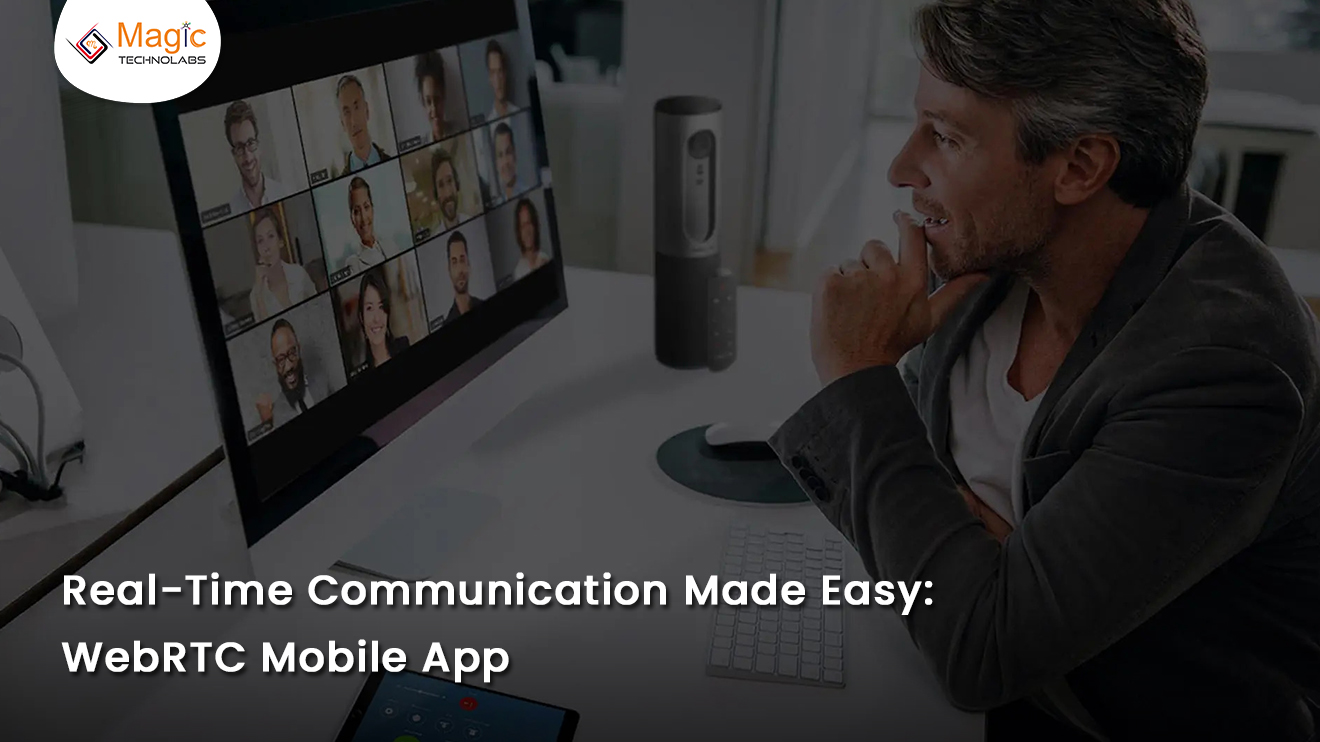WebRTC stands for Web Real-Time Communication. It is a technology that enables real-time communication between browsers and mobile applications without the need for additional plugins or software installations. WebRTC is an open-source project that was developed by Google in 2011, and it has since been standardized by the World Wide Web Consortium (W3C) and the Internet Engineering Task Force (IETF).
WebRTC is a powerful tool for video and audio conferencing, screen sharing, file transfer, and peer-to-peer networking. It uses a variety of protocols, including Secure Real-time Transport Protocol (SRTP), Real-time Transport Protocol (RTP), and Datagram Transport Layer Security (DTLS), to ensure secure and reliable data transfer. Additionally, it supports various codecs, such as VP8, VP9, H.264, and Opus, to optimize bandwidth usage and provide high-quality media streams.
The Benefits of WebRTC Mobile Apps for Businesses and Consumers
WebRTC (Web Real-Time Communication) is a technology that allows real-time audio, video, and data communication between browsers and mobile applications. WebRTC mobile app can offer several benefits to businesses and consumers, including:
Enhanced communication: WebRTC mobile apps can provide high-quality audio and video communication, allowing for clearer and more effective communication between businesses and consumers.
Cost-effective: WebRTC mobile apps eliminate the need for expensive communication infrastructure and hardware, reducing the cost of communication for businesses and consumers.
Increased efficiency: WebRTC mobile apps can improve business efficiency by providing instant access to customer support and real-time communication with colleagues, partners, and customers.
Improved customer service: WebRTC mobile apps allow businesses to offer real-time support, reducing wait times and increasing customer satisfaction.
Increased accessibility: WebRTC mobile apps can be accessed from any device, making communication more accessible to businesses and consumers.
Enhanced security: WebRTC mobile apps use encryption to protect sensitive information and ensure secure communication.
Seamless integration: WebRTC mobile apps can be easily integrated with other communication channels, such as email and social media, providing a seamless experience for users.
How to Build a WebRTC Mobile App: A Step-by-Step Guide
WebRTC (Web Real-Time Communications) is an open-source project that allows real-time audio, video, and data sharing between web browsers and mobile applications. Building a WebRTC requires knowledge of programming languages, software development tools, and frameworks. Here is a step-by-step guide on how to build a WebRTC:
Choose a Development Framework: The first step is to choose a development framework that supports WebRTC, such as React Native, Flutter, or Ionic.
Set up the Development Environment: Install the development tools and software, such as Node.js, NPM, and a code editor, that are required for your chosen framework.
Create a New Project: Create a new project in your chosen framework, and set up the basic project structure.
Set Up the WebRTC Connection: Use the WebRTC API to establish a connection between the mobile app and the web browser, and enable audio and video communication.
Implement User Interface: Design and implement the user interface of your mobile app, including the call interface, settings, and chat interface.
Add Functionality: Add functionality to your app, such as call recording, screen sharing, and file sharing.
Test and Debug: Test your app on different mobile devices and browsers to ensure compatibility and functionality. Debug any issues that arise during testing.
Deploy the App: Deploy your app on the app store or play store, or distribute it to your users through other channels.
Maintain and Update the App: Maintain and update your app with new features, bug fixes, and security patches.
Building a WebRTC can be challenging, but following these steps can help simplify the process
WebRTC vs. Traditional Communication Methods: Why WebRTC is the Better Choice
WebRTC (Web Real-Time Communication) is a technology that enables real-time audio, video, and data communication over the internet using web browsers. Compared to traditional communication methods like phone calls or video conferencing software, WebRTC has several advantages that make it a better choice for modern communication needs.
Here are some reasons why WebRTC is the better choice:
Simplicity and Accessibility: WebRTC is integrated into most modern web browsers, which makes it very easy to use. There is no need to download any software or plugins, which eliminates the need for complex installation procedures. This accessibility and simplicity make WebRTC an excellent choice for everyday communication needs.
High-Quality Video and Audio: WebRTC uses advanced codecs and algorithms to provide high-quality audio and video. It can automatically adjust to network conditions, which ensures smooth and uninterrupted communication, even over low-bandwidth connections. This makes WebRTC ideal for remote work, online classes, and other situations where clear communication is essential.
Security: WebRTC uses end-to-end encryption, which means that communication between users is secure and private. This level of security is essential for businesses, healthcare providers, and other organizations that deal with sensitive data.
Cost-Effective: Traditional communication methods like phone calls or video conferencing can be costly, especially for international calls. With WebRTC, communication is entirely web-based and free. This makes it an excellent choice for small businesses, remote teams, and other organizations that need to communicate frequently but have limited budgets.
Versatility: WebRTC is highly versatile and can be integrated into various applications and devices, including smartphones, laptops, and tablets. This versatility makes it an excellent choice for a wide range of use cases, including remote work, telemedicine, customer support, and online education.
Conclusion
In conclusion, WebRTC is the better choice for modern communication needs due to its simplicity, accessibility, high-quality audio and video, security, cost-effectiveness, and versatility. It is an excellent choice for businesses, healthcare providers, educational institutions, and anyone who needs to communicate frequently over the internet.
















